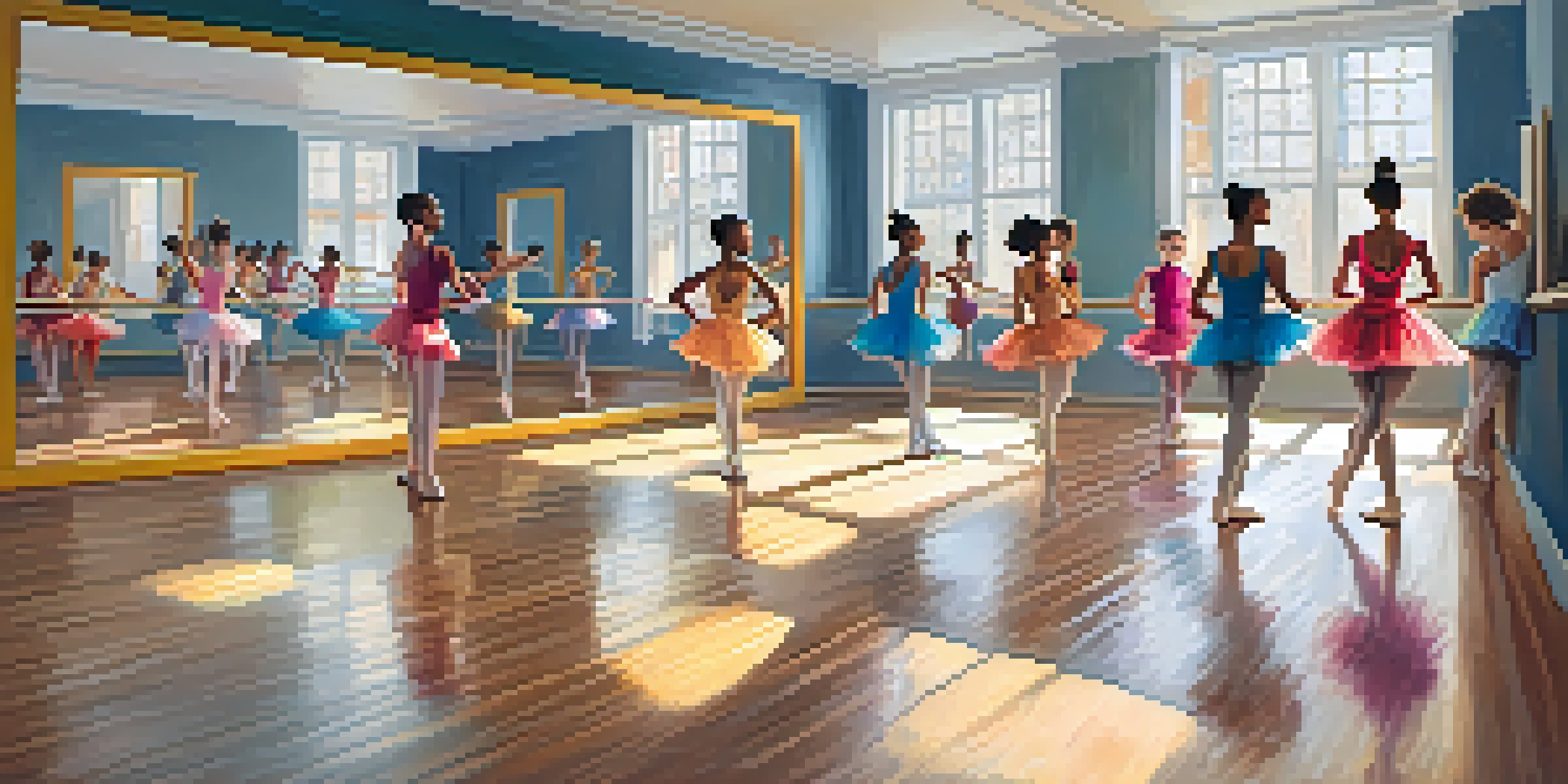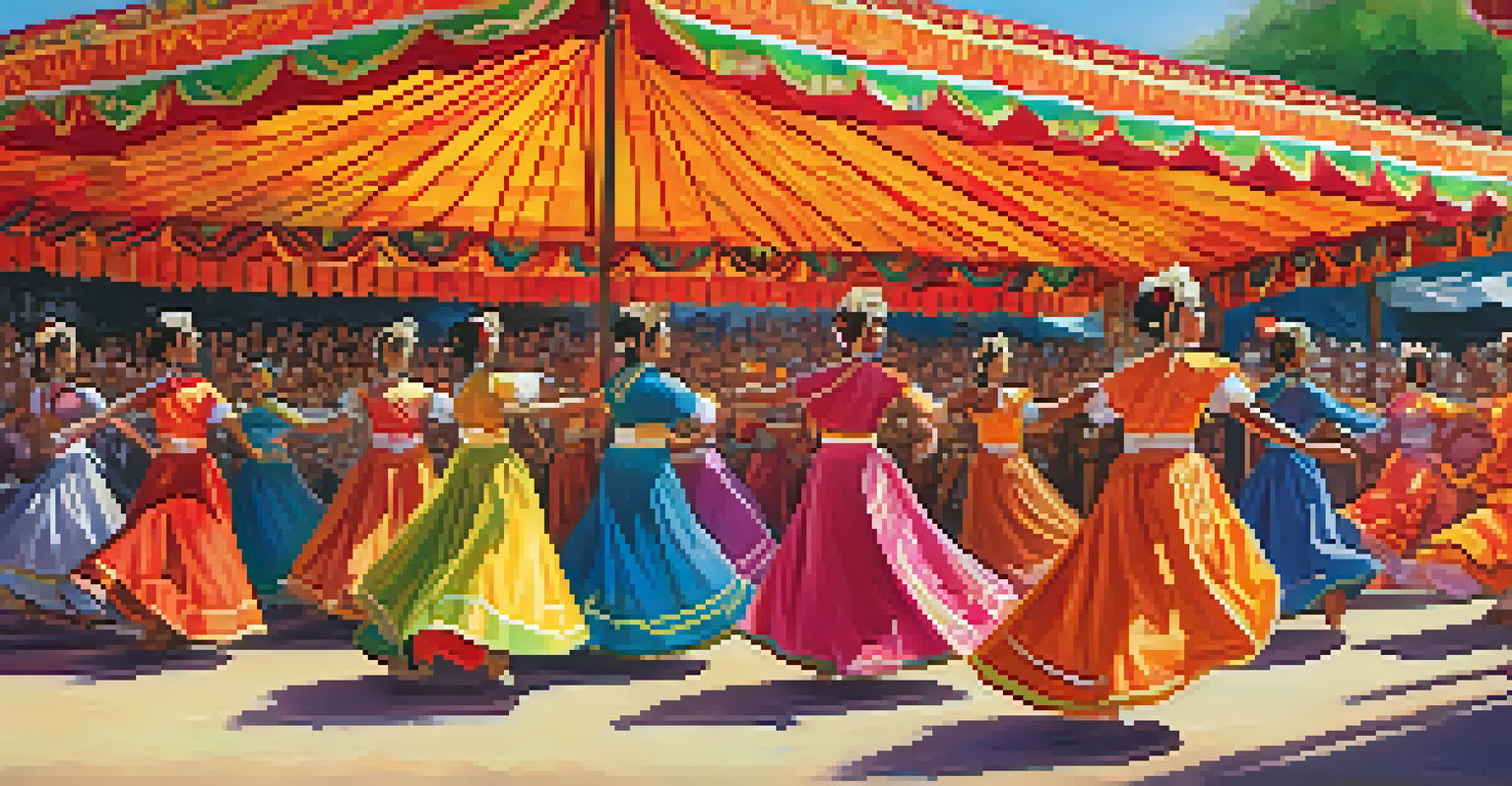How Streaming Platforms are Transforming Dance Accessibility

The Rise of Streaming Platforms in Dance Education
In recent years, streaming platforms have surged in popularity, providing a convenient way for dance enthusiasts to learn and explore various styles. With platforms like YouTube, Vimeo, and specialized services, anyone can access a wealth of dance tutorials and performances from the comfort of their home. This shift has opened doors for aspiring dancers who may not have access to traditional dance studios or classes due to geographical or financial limitations.
Dance is the hidden language of the soul.
Moreover, many professional dance companies and schools are embracing streaming as a way to reach a broader audience. By offering live-streamed classes or recorded sessions, they can connect with students who may not have the means to travel for in-person instruction. This democratization of dance education fosters a more inclusive environment where talent and passion are the main criteria for success, rather than location or resources.
As a result, we see an exciting blend of traditional dance forms and modern accessibility. Dancers from diverse backgrounds can now showcase their skills and learn from experts worldwide, creating a rich tapestry of dance culture that was previously hard to access. Streaming platforms are not just changing how we learn dance; they are reshaping the entire dance community.
Breaking Barriers: Accessibility for All
Accessibility in dance has traditionally been a challenge, with many individuals facing physical, financial, or geographical barriers. Streaming platforms are breaking down these walls by providing a variety of resources tailored for different needs. Whether it’s adaptive dance classes for individuals with disabilities or free tutorials for those on a budget, there is something for everyone online.

This new wave of accessibility means that everyone can engage with dance, regardless of their background or circumstances. For instance, a person living in a rural area may have limited options for in-person classes, but with streaming, they can participate in world-class workshops from their living room. This flexibility empowers individuals to pursue their passion without being held back by logistical issues.
Streaming Makes Dance Accessible
Streaming platforms are breaking down barriers in dance education, allowing individuals from various backgrounds to learn and participate in dance regardless of their circumstances.
Additionally, many streaming platforms are now incorporating features such as subtitles and sign language interpretation, further widening their reach. This commitment to inclusivity ensures that dance can be enjoyed by everyone, making it a truly universal art form. As we celebrate this progress, it's clear that streaming is not just a trend; it's a transformative movement.
The Impact of Social Media on Dance Communities
Social media platforms play a crucial role in the dance world. They serve as a stage where dancers can share their work, connect with others, and participate in global conversations. Whether it’s through TikTok challenges, Instagram reels, or Facebook groups, these platforms are cultivating vibrant dance communities that transcend borders and cultures.
The dance is a poem of which each movement is a word.
Moreover, social media allows for real-time feedback and interaction, creating a sense of belonging among dancers. For instance, a dancer in New York can easily collaborate with a choreographer in Tokyo, thanks to the connectivity provided by these platforms. This exchange of ideas not only enriches individual dancers but also enhances the overall diversity of dance styles being shared and celebrated.
As dancers showcase their skills and creativity online, they inspire others to join the movement. This viral nature of dance challenges encourages participation from individuals who may have never considered dancing before. By harnessing the power of social media, we’re witnessing a new generation of dancers who are eager to learn, share, and connect with others worldwide.
Virtual Competitions and Performances: A New Era
The pandemic accelerated the shift towards virtual competitions and performances, allowing dancers to showcase their talents without the constraints of physical venues. Organizations quickly adapted by hosting online dance competitions, where participants submitted videos of their routines for judges to evaluate. This innovation not only kept the competitive spirit alive but also expanded the reach of these events to a global audience.
Virtual performances have also provided dancers with opportunities to feature their work in unique ways. Instead of traditional theater spaces, dancers can now create immersive experiences that blend technology and art, reaching audiences far and wide. This creative freedom has opened the door for new choreographic styles and collaborations that might not have been possible in a conventional setting.
Global Dance Culture Emerges
The rise of streaming platforms fosters a global dance culture, enabling dancers to share and blend diverse traditions and styles, which enriches the entire dance community.
As we move forward, it's likely that a hybrid model will emerge, combining the best of in-person and virtual experiences. This evolution ensures that more dancers than ever have a platform to express themselves and gain visibility, further enriching the dance community as a whole. The excitement surrounding these developments is palpable, and it marks a significant milestone in the history of dance.
The Role of Streaming in Dance Therapy and Wellness
Dance therapy has long been recognized as an effective way to address emotional and psychological challenges. Streaming platforms are now playing a pivotal role in making dance therapy accessible to those who need it most. With online sessions available at various times and formats, individuals can engage in therapeutic dance practices from the comfort of their own homes.
This shift is particularly beneficial for people who may feel uncomfortable attending in-person sessions. Online dance therapy allows for a safe space where individuals can express themselves without fear of judgment. Furthermore, the anonymity that comes with virtual sessions can encourage more people to seek help and explore the therapeutic benefits of movement.
The intersection of dance and mental health is a growing field, and streaming platforms are at the forefront of this movement. By providing accessible resources and expert guidance, they are helping individuals discover the healing power of dance. As awareness around mental health continues to rise, the role of streaming in this domain is likely to expand, fostering a healthier and more connected society.
Building a Global Dance Culture Through Streaming
One of the most exciting aspects of streaming platforms is their ability to foster a global dance culture. Dancers from different parts of the world can now share their traditions and styles, creating a rich tapestry of influences that inspire new generations. This exchange not only celebrates diversity but also encourages innovation as dancers blend techniques from various cultures.
With access to international dance styles, learners can explore everything from traditional African dance to contemporary ballet, enhancing their skill set and appreciation for the art. This cultural cross-pollination enriches the dance community and encourages a spirit of collaboration and creativity. Dancers are no longer limited to their local scenes; they are part of a global movement.
Future of Dance is Streaming-Driven
As technology advances, streaming will continue to shape the future of dance with more interactive experiences and tailored content for dancers worldwide.
As streaming continues to evolve, we can expect even more opportunities for cross-cultural collaborations and exchanges. Workshops, competitions, and performances will increasingly feature artists from diverse backgrounds, further enriching the dance landscape. This global perspective not only elevates individual dancers but also promotes understanding and appreciation for different cultures through the universal language of dance.
The Future of Dance: What Streaming Means for Tomorrow
As we look to the future, it's clear that streaming platforms will continue to shape the dance landscape in profound ways. With ongoing technological advancements, we can anticipate even more interactive and immersive experiences for dancers and audiences alike. Imagine taking a class with a world-renowned instructor or experiencing a performance in virtual reality—these possibilities are already on the horizon.
Moreover, the analytics capabilities of streaming platforms allow dance educators and choreographers to better understand their audiences. This data can help tailor content and experiences to meet the needs and preferences of dancers from all walks of life. As we continue to embrace these innovations, the dance community will become more responsive and adaptable.

Ultimately, the future of dance is bright, and streaming will play a central role in its evolution. As accessibility, collaboration, and creativity flourish, we can look forward to a world where dance is more connected and inclusive than ever before. The journey has just begun, and it's an exciting time to be part of this vibrant community.